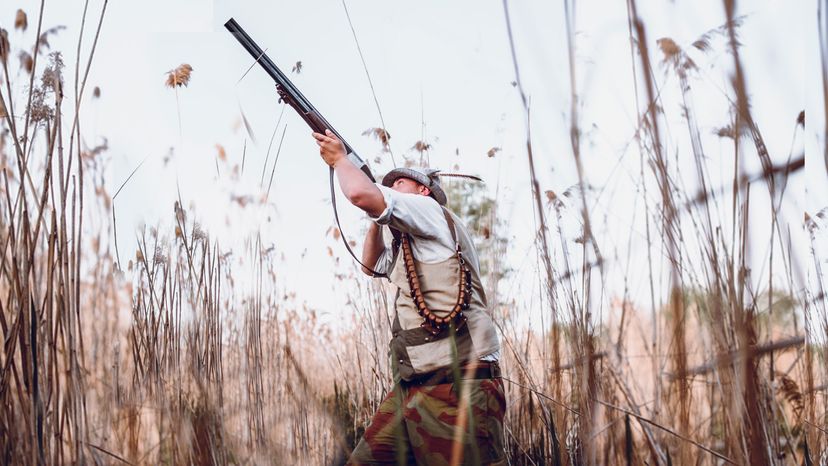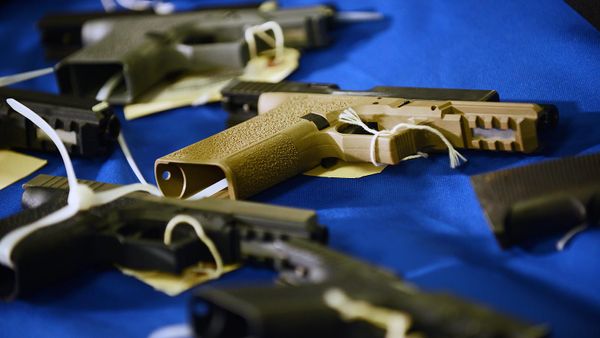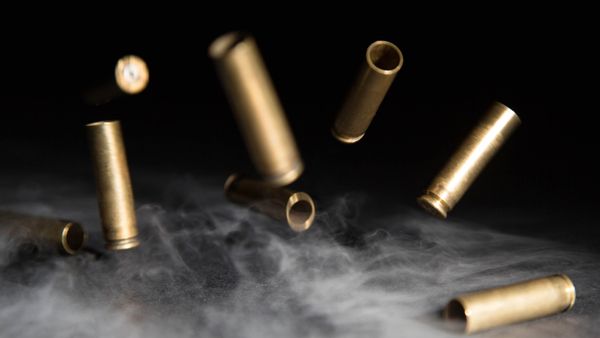Aside from the perplexing question of why such a reckless, potentially lethal practice remains so popular, you may also be wondering, what actually happens to a bullet that's fired straight up into the sky? How high does it go? What stops it and sends it falling back to Earth? And when it descends, when and where does it land?
Those aren't necessarily simple questions to answer. Ballistics researchers have spent a lot of time studying the performance of bullets fired horizontally because that's useful information for improving the accuracy and range of shooters. But when it comes to firing straight up in the air, which isn't something that soldiers, police officers, hunters or target shooters normally would do, there's not nearly as much data.
U.S. Army Maj. Gen. Julian Hatcher, who apparently was curious and had some time on his hands, did experiments in Florida in which he fired various weapons — ranging from rifles to machine guns — up into the air, and tried to measure how long it took for the bullets to come down, as well as where they landed. As he noted in his 1947 volume "Hatcher's Notebook," he calculated that a standard .30 caliber bullet fired from a rifle pointed straight up would rise to an altitude of 9,000 feet (2,743.2 meters) in 18 seconds, and then would return to Earth in another 31 seconds, and during the last few thousand feet would attain a "nearly constant" speed of 300 feet (91.4 meters) per second.
But ballistics researcher James Walker, who holds a doctorate in mathematics and is department director of engineering dynamics at the Southwest Research Institute in San Antonio, says that the altitude attained by a bullet fired straight up would depend upon the type of weapon and projectile, just as it does when fired horizontally. A handgun, which has a shorter barrel than a rifle and fires ammunition with a smaller cartridge that doesn't contain as much powder, isn't going to send a bullet soaring as high as a rifle will. Different types of rifles and ammunition vary as well.
"With a .22, which isn't a big-game rifle, the cartridge is the same diameter as the bullet," Walker explains. "It doesn't have that much powder, and that bullet doesn't go fast. Rifles like the .30-06 have a much larger cartridge, which will go faster because there is more powder to burn."
When fired horizontally, bullets tend to slow down rapidly due to air drag, so that a rifle bullet may be down to half of its initial speed by the time it gets to 500 meters (1,640.42 feet), Walker says. "If you choose to shoot it up, it will slow down faster because of gravity, not a whole lot."
For altitude estimates, Walker pointed to this chart on the website of Close Focus Research, a ballistics testing company, which shows that a .25 caliber ACP handgun bullet might reach a maximum height of 2,287 feet (697 meters), while a .30-06 rifle bullet would rise to 10,105 feet (3,080 meters).



